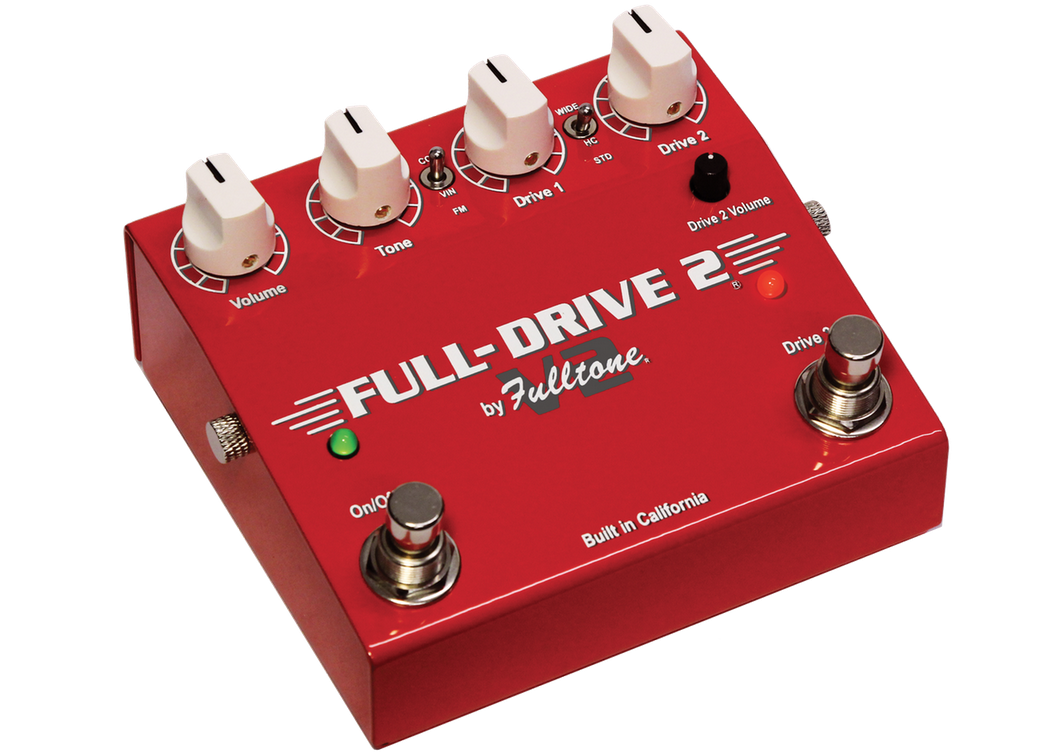Fulltone Debuts New Full-Drive 2 V2 Pedal

Fulltone has announced a successor to its massively popular Full-Drive 2 pedal, the Full-Drive 2 V2.
The pedal is based around the JRC4558 chip and the Nineties Full-Drive circuit, and features two toggle switches for additional tones, packed into a smaller chassis than the original.
The pedal features the following left switch clipping options:
- Comp-Cut - removes clipping diodes, not a clean boost because it can distort the opamp.
- Flat Mids - a late Nineties Fulltone invention that feeds signal back on to the clipping diodes removing the Mid-hump.
- Vintage - traditional Nineties Full-Drive slightly asymmetrical clipping.
The right handles these three:
- Wide - combines Mosfets & Schottky Diodes for more clarity, less compression, a more D*mble-like sound.
- Standard - traditional Nineties FD2 slightly asymmetrical.
- Half-Clipped - another Fulltone exclusive, only clips the top waveform for extreme clarity, feel and touch like you've never experienced.
The pedal also features two footswitchable channels with individual gain and tone controls, Fulltone’s ‘No-Pop’ true bypass circuit and a 9-18V power supply operation.
The Full-Drive 2 V2 is set for a July 15 release. The price has yet to be determined.
For more info on the pedal, head on over to fulltone.com.
All the latest guitar news, interviews, lessons, reviews, deals and more, direct to your inbox!
Since 1980, Guitar World has been the ultimate resource for guitarists. Whether you want to learn the techniques employed by your guitar heroes, read about their latest projects or simply need to know which guitar is the right one to buy, Guitar World is the place to look.

